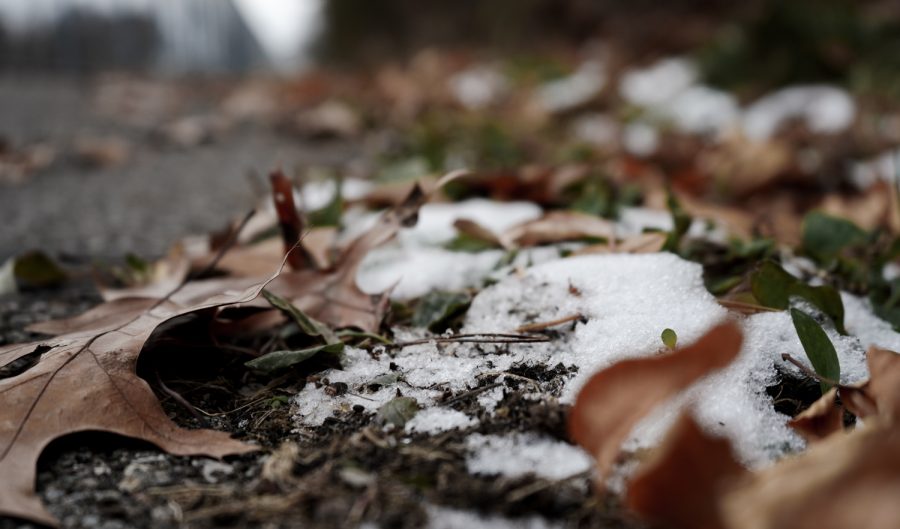SAD isn’t Bad
As winter ushers in colder weather, the symptoms of seasonal depression become more prevalent.
The snow has begun to fall, and the dreary winter scene does little to aid the mental health of students who struggle with depression.
I used to wonder why it was so hard for me to get out of bed, especially as the months grew colder and the days got shorter. I’ve never been a morning person, but even in the summer and early days of fall I seem to find myself waking up earlier and more enthusiastic to start my day. For years, I searched for answers as to why my time in bed grew longer, my motivation decreased exponentially, and the things that used to bring me joy just simply didn’t anymore. It wasn’t until I started talking to a therapist that I was diagnosed with Seasonal Affective Disorder (SAD), commonly known as seasonal depression.
The stigma surrounding mental health is quite vast and very deeply rooted in our society. I am lucky enough to have a mother who works as a psychologist and is supportive and understanding of the things that go with struggling with mental health. Unfortunately, not many can say this. People who suffer from any sort of depression are usually dismissed as attention-seekers. I have so often been told that I’m “just sad” and I’ll “get over it” if I just “try to be happy.”
These responses degrade a very serious mental illnesses that 322 million people suffer from worldwide, 16 million of whom are Americans, only including the reported cases. Millions of people suffer in silence because these stigmas are homegrown, made only stronger by those closest to us whom we wish to confide in. And many of these people will also feel some sort of shame or guilt for recognizing that they have fallen victim to a stigma they were unwittingly upholding.
To recognize more generalized depressive disorders, such as Persistent Depressive Disorder (PDD) or Major Depressive Disorder (MDD), and to seek help for them is hard enough, but to recognize SAD can be even more difficult. The same stigmas that tell us PDD and MDD are merely medical terms for sadness are the same stigmas that tell us SAD is just a fancy word for the “winter blues.” Whether someone suffering from SAD experiences it as their only form of a depressive order or if it complicates pre-existing depressive disorders, it’s always difficult to explain the psychological effects that persistent colder weather brings.
The symptoms for PDD and MDD carry over into the list of symptoms that those suffering from SAD experience, including the loss of interest in activities that were once enjoyable, low energy, difficulty sleeping and concentrating, feeling irritable, a sense of hopelessness or guilt, thoughts of self harm or suicidal ideation, and many others. People suffering from SAD also experience significantly more appetite change, oversleeping, fatigue, and weight loss, as well as the worsening of general depression symptoms.
As the winter months usher in colder weather, these symptoms can hit students the worst of all. Students suffer from unquantifiable amounts of stress during the school year, regardless of the weather, but the routine we are forced into does nothing to aid our mental health. We must wake up too early, drive to school when it is too dark, sit in a building with too few windows, and by the time we drive home, we have two or three hours of sunlight before the sun sets, and we are forced to repeat the cycle yet again.
There are a lot of different reasons that students suffer from depressive disorders, but 1 in 20 students will have experienced a severe episode of SAD by the time they graduate. Among other factors, the lack of sunlight does the most harm. In a study done by the University of Pennsylvania, the neurons that produce neurotransmitters like serotonin and dopamine actually begin to die off when there is a lack of sunlight. With very few windows at NASH, our student population may contribute to the thousands of unreported cases of SAD each year.
The odds are not necessarily on our side as students here at NASH. During the winter months we get, at most, four hours of sunlight outside of school. But with homework, extra curricular activities, and jobs after school, a lot of students may find it difficult to really be getting the sunlight they need, especially when it’s so cold outside.
Yet, even the lack of sunlight can easily be remedied with a simple Amazon purchase of a sun lamp. While these solutions exist, the difficulty in fighting SAD mainly comes from the lack of support that so many people face. It can be difficult to reach out for help, especially when the problem seems that it will resolve itself in a couple of months. Unfortunately, many people suffering from SAD will feel the effects long after it is gone.
Any depressive disorder is difficult enough. I can speak from experience that is is daunting to even do the simple things, like getting out of bed or cleaning your room, but keeping relationships with friends and loved ones is even harder. When someone suffers from depression of any sort, they often push people away, and when they begin to come out of a depressive episode, they can feel even more alone than when it started.
For students, it can be even more difficult. In high school, self-image usually is a top priority, whether it should be or not, and even our most trusted friends can be quick to judge. Depression doesn’t alienate us — we alienate ourselves to try to hold on to the friends we still have and the way they view us. High schoolers often battle their depression alone, hoping it goes away, and removing themselves from all of their support systems in the process. As this depression begins to fade, they often find that they have removed themselves, or have been removed from the people they once confided in.
I used to think that admitting I had SAD would make me seem weak, or that it was going to seem like I was looking for attention, but in opening up about it, I’ve learned that there are way more people going through the same things as I do. Seeking help is important, and it’s the only way things will get better.
Especially as the cold grows colder, and the days grow shorter, addressing SAD is increasingly important. While sun lamps may help SAD, they won’t solve everything. Remember that talking about it and asking for help will always do more good than harm, especially before it becomes too late.
If you or anyone you know has experienced thoughts of self-harm, or suicidal thoughts or actions, please consider calling one of these numbers, or seeking help from one of the many other crisis hotlines that are available in the Pittsburgh area.
Suicide Prevention Hotline: 1-800-273-8255
Resolve: 1-888-796-8226

Julia is a senior at NASH and is delighted to be this year's Photography Editor. She uses she/they pronouns and is passionate about making a positive change in the world. In her spare time she enjoys reading about philosophy, photographing the world, creating art, writing, and caring for her plants. She hopes to become a helicopter pilot one day and dreams of going to school in New Zealand.


